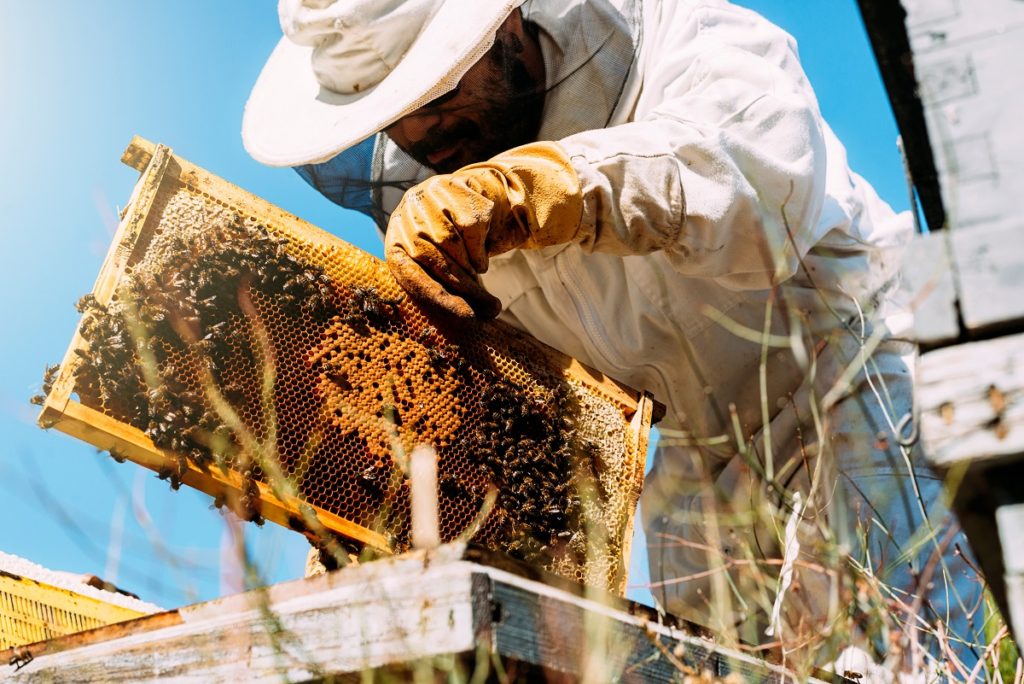Honey farming can be dangerous because bees naturally behave in a defensive manner. They attack at the slightest disturbance, and their stings can be harmful. That is why it is vital to employ specific safety measures when engaging in any beekeeping activity.
1. Choose an appropriate location
Like other living organisms, bees interact. Make sure you place your beehives on a site that is well isolated to prevent them from interfering with the lives of other people. You can set the hives close to a farm field and inform the owner of your beekeeping activity. Remember not to place the colonies near an agricultural area that applies insecticides, pesticides, or chemicals for these may harm the bees. Additionally, inform your immediate neighbours of your beekeeping practice to protect them from going near the hives in case they visit your home.
2. Have the right protective gear
It is advisable to wear protective clothing and carry safety equipment before you get close to the beehives. These may include a bee smoker, a beekeeping hat, a bee veil, beekeeping gloves, sock protectors, and a bee protective suit. Make sure your protective gear is clean all the time because bees don’t like certain scents such as dog odor or diesel fuel smell. Note that these protective items cannot make you sting-proof; they only help reduce incidents of bee stings.
3. Avoid making the bees aggressive
Bees are calm and sweet, but they can abruptly change their mood and become angry attackers. When dealing with bees, timing is essential. To avoid making the bees defensive, work on the hives on a bright, shiny, and warm day. Avoid handling the colonies when it’s raining, hot, or during a thunderstorm for these can irritate them and cause aggressive behaviour. Also, often check if the bees have a queen; if they don’t, replace your hives with a gentle queen in time to prevent them from being hostile.

4. Transport the bees in a gentle manner
As a bee farmer, you may occasionally need to move your bees from one place to another, especially for paid pollination services. This can pose a considerable risk for you and the people around you. Consider the following before transporting the hives;
- Check if the bees are in good health condition.
- Completely seal the beehives carrier and separate it from the driver in case the bees sneak out of the carrier.
- Consider moving the beehives during the night and make zero stops in populated places to reduce any unforeseen risks.
- Use warning placards that advise other drivers to keep their distance from your truck. Bees can be unpredictable.
5. Plan before harvesting
If you are doing your first extraction, read and research on how you should go about it. More so, make adequate preparations on the type of tools that you will require for the harvesting process. Consult your local beekeeping equipment dealer and ask them to guide you on the kind of innovative products you can harvest from your hives. Make sure you settle on how, when, and where you will collect from, and how you will bottle the honey before the designated day.
You are good to go
Apart from the mentioned items, make sure you seek advice from a trusted beekeeping equipment dealer. If you are in New Zealand, consider contacting a local dealer who will advise you according to your location and recommend which type of new tools you should utilize.

